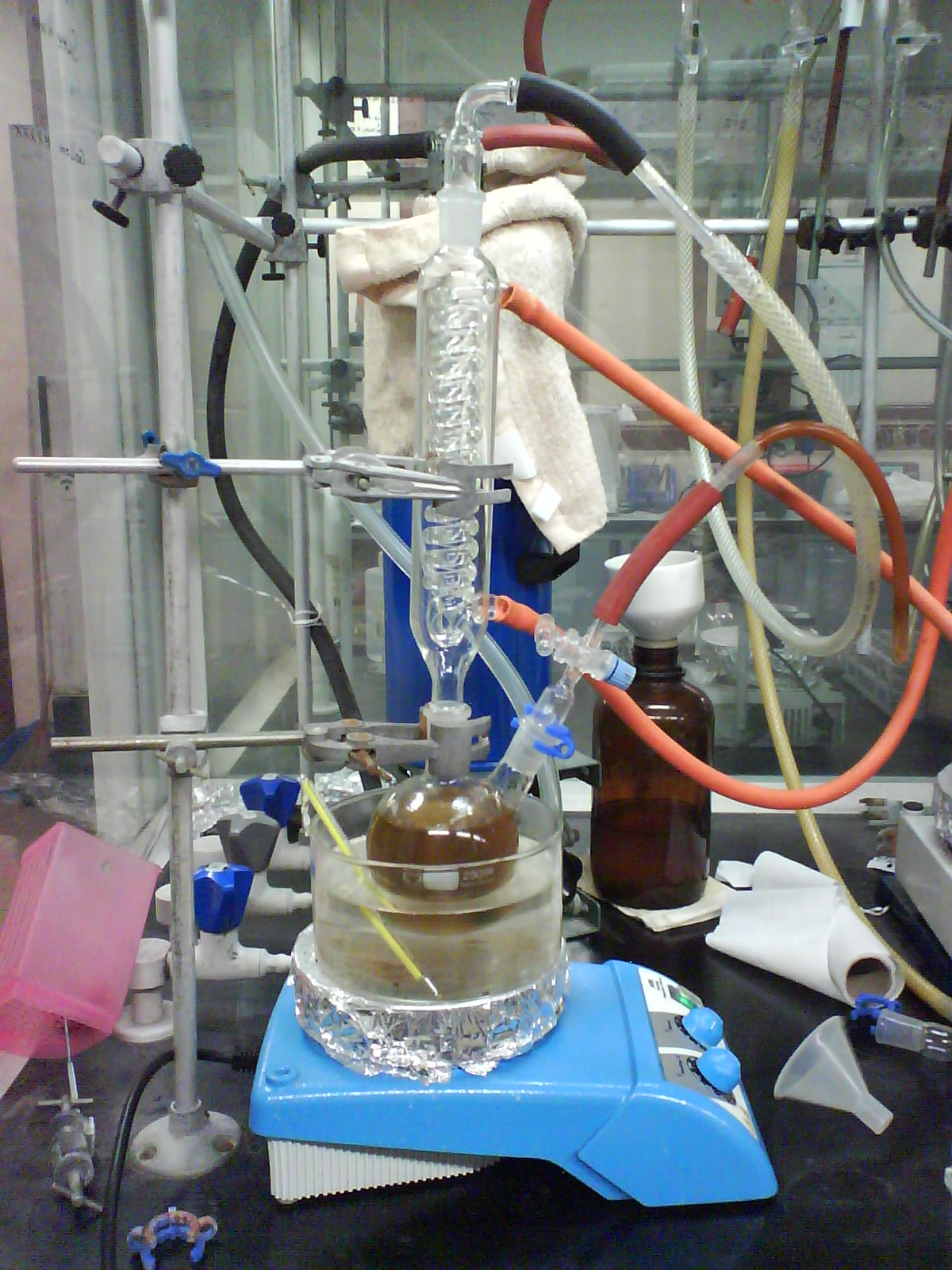Ketyl on:
[Wikipedia]
[Google]
[Amazon]

 A ketyl group in
A ketyl group in  Ketyls can be formed as
Ketyls can be formed as

 A ketyl group in
A ketyl group in organic chemistry
Organic chemistry is a subdiscipline within chemistry involving the scientific study of the structure, properties, and reactions of organic compounds and organic materials, i.e., matter in its various forms that contain carbon atoms.Clayden, J.; ...
is an anion
An ion () is an atom or molecule with a net electrical charge.
The charge of an electron is considered to be negative by convention and this charge is equal and opposite to the charge of a proton, which is considered to be positive by convent ...
radical
Radical may refer to:
Politics and ideology Politics
*Radical politics, the political intent of fundamental societal change
*Radicalism (historical), the Radical Movement that began in late 18th century Britain and spread to continental Europe and ...
that contains a group R2C−O•. It is the product of the 1-electron reduction of a ketone.
Another mesomeric structure has the radical position on carbon and the negative charge on oxygen.
:radical anion
In organic chemistry, a radical anion is a free radical species that carries a negative charge. Radical anions are encountered in organic chemistry as reduced derivatives of polycyclic aromatic compounds, e.g. sodium naphthenide. An example of ...
s by one-electron reduction
Redox (reduction–oxidation, , ) is a type of chemical reaction in which the oxidation states of substrate change. Oxidation is the loss of electrons or an increase in the oxidation state, while reduction is the gain of electrons or a d ...
of carbonyl
In organic chemistry, a carbonyl group is a functional group composed of a carbon atom double-bonded to an oxygen atom: C=O. It is common to several classes of organic compounds, as part of many larger functional groups. A compound containing a ...
s with alkali metal
The alkali metals consist of the chemical elements lithium (Li), sodium (Na), potassium (K),The symbols Na and K for sodium and potassium are derived from their Latin names, ''natrium'' and ''kalium''; these are still the origins of the names ...
s. Sodium and potassium metal reduce benzophenone in THF solution to the soluble ketyl radical. Ketyls are also invoked as intermediates in the pinacol coupling reaction A pinacol coupling reaction is an organic reaction in which a carbon–carbon bond is formed between the carbonyl groups of an aldehyde or a ketone in presence of an electron donor in a free radical process. The reaction product is a vicinal diol. ...
.
Reactions
Water
The ketyl radicals derived from the reaction ofsodium
Sodium is a chemical element with the symbol Na (from Latin ''natrium'') and atomic number 11. It is a soft, silvery-white, highly reactive metal. Sodium is an alkali metal, being in group 1 of the periodic table. Its only stable iso ...
and benzophenone
Benzophenone is the organic compound with the formula (C6H5)2CO, generally abbreviated Ph2CO. It is a white solid that is soluble in organic solvents. Benzophenone is a widely used building block in organic chemistry, being the parent diarylket ...
is a common laboratory desiccant. Ketyls react quickly with the water, peroxides, and with oxygen. Thus, the deep purple coloration qualitatively indicates dry, peroxide-free, and oxygen-free conditions. The method for drying is still popular in many laboratories due to its ability to produce such pure solvent quickly. An alternative option for chemists interested only in water-free solvent is the use of molecular sieves. This is a much safer method than using an alkali metal still, produces solvent as dry as sodium-ketyl (though not as dry as potassium, or potassium-sodium alloy) but takes longer.
Oxygen
Sodium benzophenone ketyl reacts with oxygen to give the sodium benzoate and sodium phenoxide.Reducing agent
Potassium-benzophenone ketyl is used as a reductant for the preparation of organoiron compounds.References
{{Reflist Functional groups Free radicals